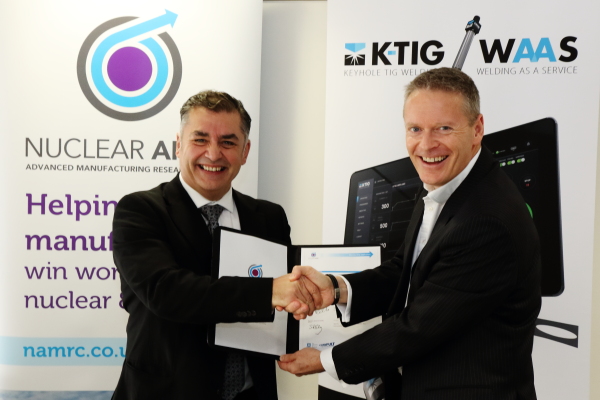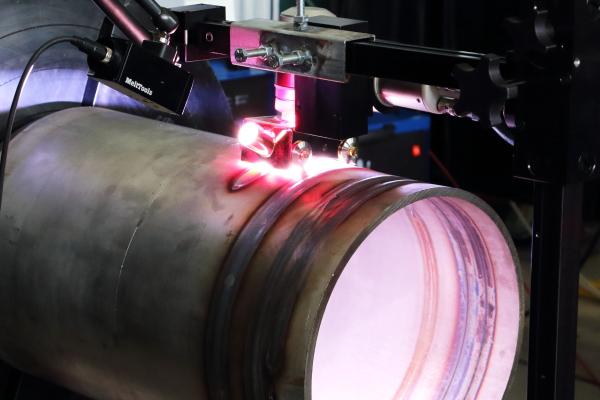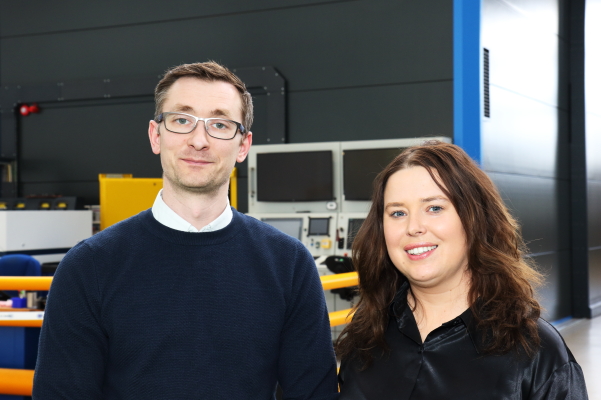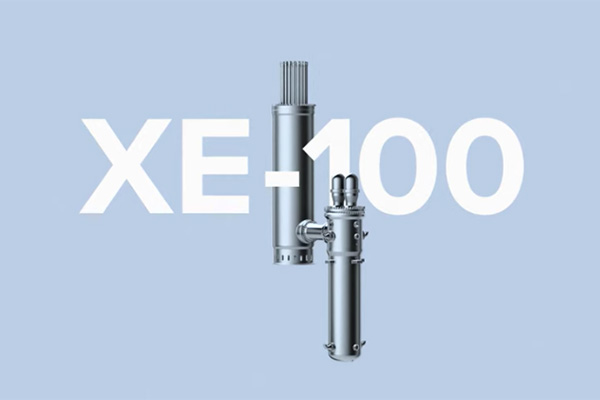Welding technology specialist K-TIG has joined the Nuclear AMRC as a member to develop new high-performance fabrication techniques for waste containers and other nuclear applications.
Based in Australia, K-TIG has developed a patented keyhole welding technology which can produce welds 10-100 times quicker than conventional tungsten gas arc welding, joining metals up to 16mm thick in a single pass.
The technology is already in operation with some of the world’s largest fabrication businesses, and is also accessible to small and medium-sized manufacturers.
The Nuclear AMRC has worked with K-TIG to assess and develop the technology for nuclear industry applications since 2015, with recent research focusing on waste containers made of duplex stainless steel.
By joining the centre as a tier two member, K-TIG will deepen its partnership with the Nuclear AMRC to help manufacturers in the UK decommissioning supply chain improve productivity and reduce costs for waste container fabrication.
“The Nuclear AMRC’s approach to developing highly advanced manufacturing techniques and processes for the benefit of the nuclear sector through industry partnerships with leading technology providers is unrivaled globally,” says Neil Le Quesne, President Market Development at K-TIG.
“K-TIG intends to build on the last several years of collaboration with the Nuclear AMRC, to become a long-term partner and to collaborate extensively in solving the productivity challenges associated with fabricating the tens of thousands of nuclear storage containers required by the UK nuclear decommissioning programme over the coming years.
“The Nuclear AMRC’s focus on exceptional weld quality, negligible distortion, high corrosion resistance and stable material properties under the most demanding conditions is the identical focus as K-TIG’s, and we look forward to co-developing solutions that will deliver highly tangible commercial outcomes.
“By working collaboratively with the Nuclear AMRC we believe that we can overcome some of the key manufacturing challenges associated with fabricating nuclear storage containers, assist in building the large domestic UK capacity required, and enable UK fabricators to compete globally in meeting the cost, quality and delivery requirements of the many countries struggling with the sheer scale of nuclear decommissioning requirements.”
 As part of its membership, K-TIG will significantly upgrade the Nuclear AMRC’s current equipment, and provide additional training to the centre’s weld engineers and technicians.
As part of its membership, K-TIG will significantly upgrade the Nuclear AMRC’s current equipment, and provide additional training to the centre’s weld engineers and technicians.
“We’re delighted to welcome K-TIG as a member of the Nuclear AMRC, which builds on several years of association and collaboration between our two organisations,” says Sean Eley, Commercial Director of the Nuclear AMRC. “We see K-TIG as a key industry partner to help us address the productivity, cost and quality challenges of nuclear waste container fabrication.
“As a key partner to the UK nuclear industry, our engineers are tackling a wide variety of challenges in decommissioning. Some of the biggest challenges are in the cost-effective manufacture of waste containers, of which we’ll need tens of thousands as we decommission the UK’s legacy sites. By applying new technologies and processes to current and future designs of container, we can significantly reduce the cost of decommissioning at home and worldwide.
“K-TIG’s keyhole welding technology has already proven to be extremely effective in nuclear waste container fabrication, and we look forward to working collaboratively to further expand these capabilities through a long and mutually beneficial industry partnership.”
As well as waste container fabrication, the technology can improve productivity for other nuclear industry applications made from corrosion-resistant materials, including pressure vessels, heat exchangers, tubes and pipework down to 75mm diameter.
 The K-TIG technique uses a high current arc to open a keyhole through the join between two surfaces, fusing the parent material with little or no wire added. It can produce a stable keyhole at much lower energy densities than other keyhole welding technologies such as electron beam, laser and plasma arc, and uses as little as five per cent of the energy and gas used by conventional welding.
The K-TIG technique uses a high current arc to open a keyhole through the join between two surfaces, fusing the parent material with little or no wire added. It can produce a stable keyhole at much lower energy densities than other keyhole welding technologies such as electron beam, laser and plasma arc, and uses as little as five per cent of the energy and gas used by conventional welding.
- For more information: k-tig.com






